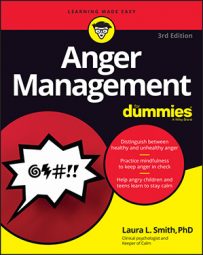All emotions (including anger) have benefits at various times to varying degrees. Anger also has an extensive array of possible costs. Businesspeople use what's known as a cost-benefit analysis all the time to improve their decision making and increase their odds of success. A cost-benefit analysis involves a systematic approach for evaluating the strengths and weaknesses of any kind of option under consideration.
This technique has, in fact, become a cornerstone of cognitive behavioral approaches to anger as well as depression, anxiety, worry, and substance abuse.
A cost-benefit analysis helps you form an objective picture of any important decision. You can use one to decide whether to change your approach to anger.
How a cost-benefit analysis works
Conducting a cost-benefit analysis is pretty easy and straightforward. This technique helps you see conflicting thoughts side by side. The following example shows how it works.
Rosalyn marries Todd who has an unusually close-knit family. She loves her in-laws who are caring, warm, personable, and kind. Although her in-laws live across the country, during the first four years of marriage, they shower her with thoughtful gifts, frequent texts, and favored recipes. She can't believe how lucky she is to marry into a family like Todd's.
No wonder Rosalyn feels excited and thrilled when her in-laws announce their retirement and decision to move just a few blocks away from them. Immediately after her in-laws move into their new home, they start dropping by frequently and unexpectedly. Sometimes they even plop themselves into Rosalyn and Todd's living room for an entire day on the weekend. Rosalyn feels she can't go out and run errands. She finds herself feeling restless, irritable, angry, and invaded. She isn't even sure why.
Rosalyn asks Todd to intervene, but he can't seem to set any limits with his parents for fear that their feelings will be hurt. She can't do anything about the problem for the same reason. Todd and Rosalyn start bickering with each other. Rosalyn starts thinking perhaps she has an anger-management problem. The table shows what Rosalyn's anger cost-benefit analysis looks like.
| Costs | Benefits |
|---|---|
| I feel on edge all the time. | My anger is at least helping me see that something is wrong. |
| I'm arguing with my husband too much. | My anger is pushing me to take action. |
| I don't appreciate my in‐laws anymore. | I took up jogging, which I like, although it's to avoid my in‐laws. |
| I can't sleep at night. | My house is cleaner because I clean when they're around. |
| I want to take up smoking again, but that's not a good idea. | |
| I'm not having fun anymore. |
Rosalyn concludes that her anger costs her a lot. However, it comes with a couple of benefits. The most important benefit is that anger helps her see that there's a problem that calls for action. She and Todd discuss their need for more privacy with his parents. Surprisingly, his parents realize that they haven't done enough to develop new friends and activities since moving.
Rosalyn figures out that she doesn't really have an anger-management problem other than needing to become more assertive. Her anger is fully justified and understandable. She also concludes that if she expresses her anger more effectively, she can solve her problems and still keep the benefits of having a cleaner house and continuing her newfound love of jogging. And she can notice when things are going wrong and take actions sooner.
Your own cost-benefit analysis
Experiment with a cost-benefit analysis of your anger issues. Take your time. Simply draw a line up and down dividing a piece of paper into two columns. Label one side Costs and the other Benefits. Put down everything that occurs to you for each side. Then put it away and come back to it after a while — you just might come up with a few more items.
Here are a few questions to consider:
Has anger impacted your health; if so, how?
Does anger keep you from getting hurt?
Has anger helped or hurt you at work?
What has anger done to your relationships — good or bad?
Has anger gotten you into trouble?
Has anger truly gotten you more of what you want?
Has your anger served to punish people in a way that they learn from?
Has anger affected your family — in good ways or bad?
After you complete your cost-benefit analysis, review the perceived benefits once again. Ask yourself whether addressing your anger truly means that you'd have to lose all those benefits. Many times people find that setting limits and expressing their anger more effectively help them maintain the benefits of their anger without the old costs.
When reviewing your cost-benefit analysis, also consider whether the items represent short- or long-term costs or benefits. For example, yelling at someone may feel good at the moment, but usually costs occur over the longer term.
The absolute number of costs versus benefits isn't the key; what matters is how important the items are to you as a whole. For example, a single cost, such as being sent to jail, just might override a list of 20 seeming benefits.

